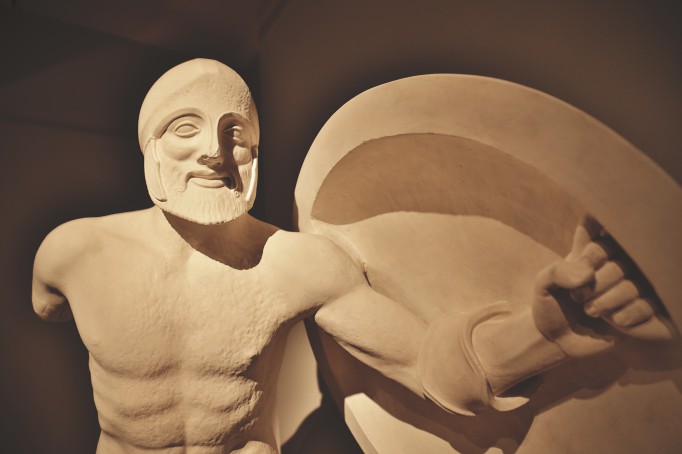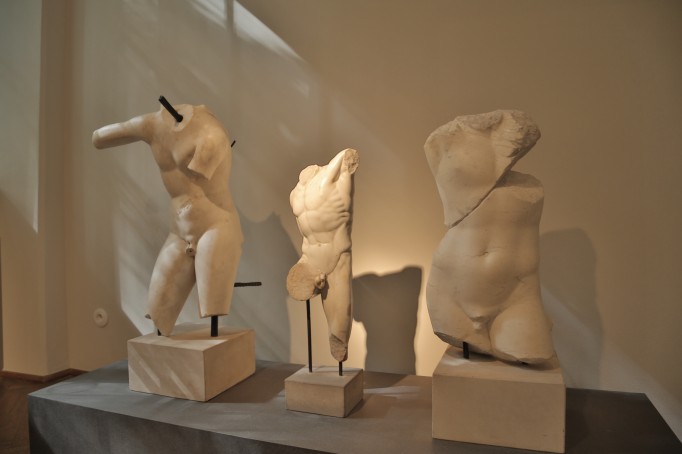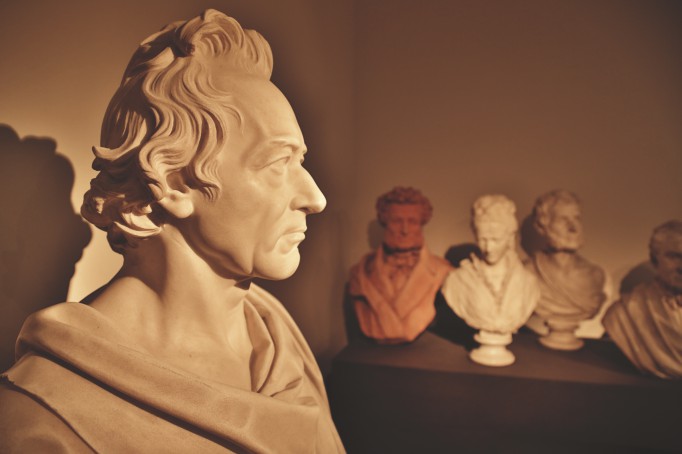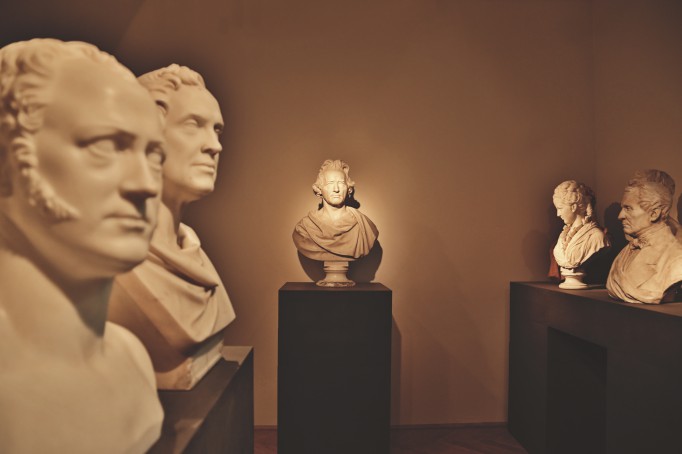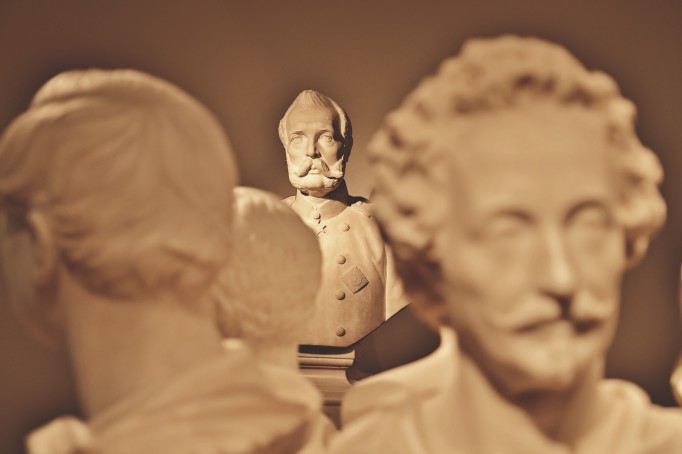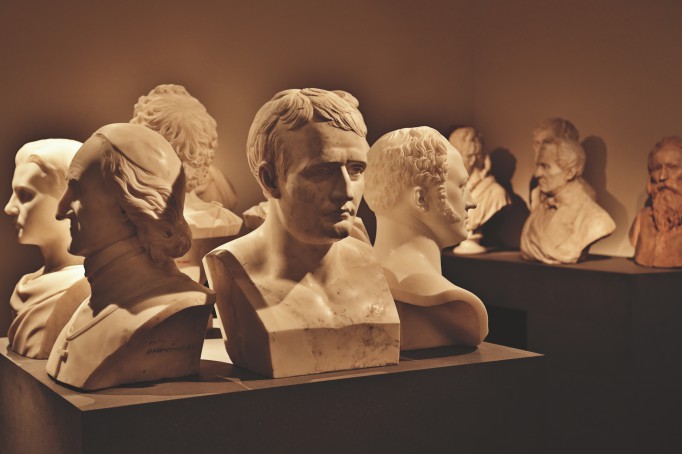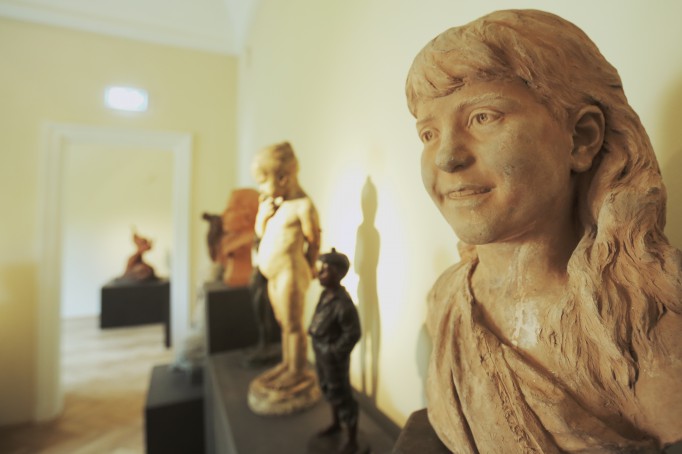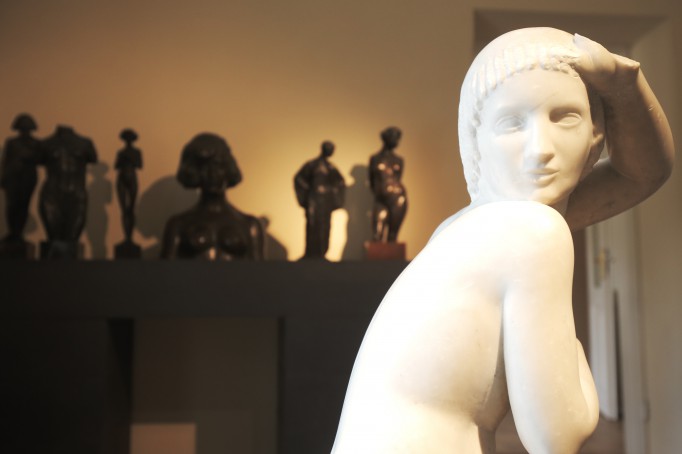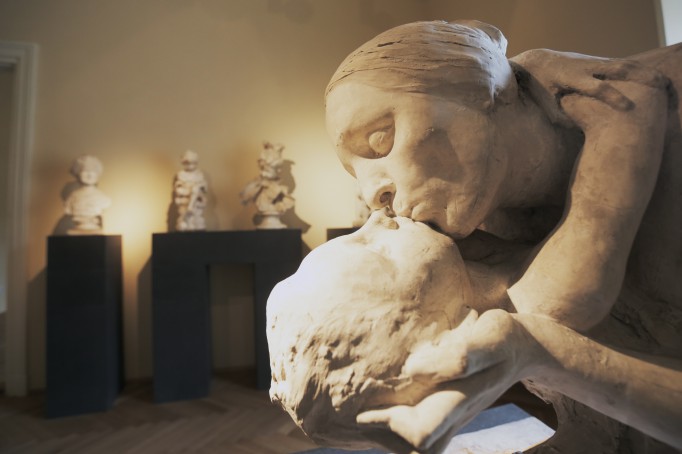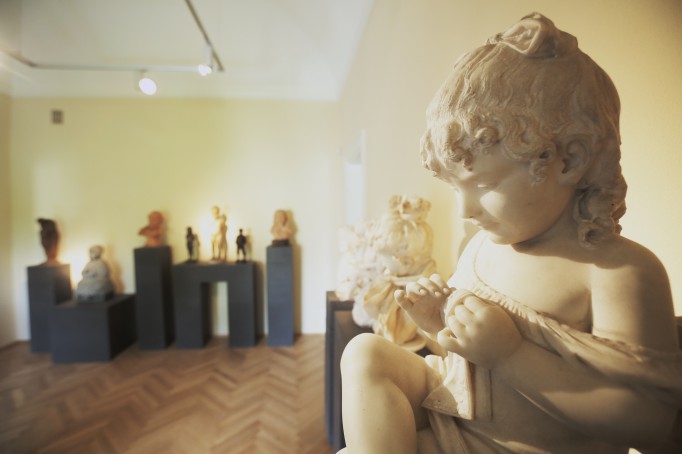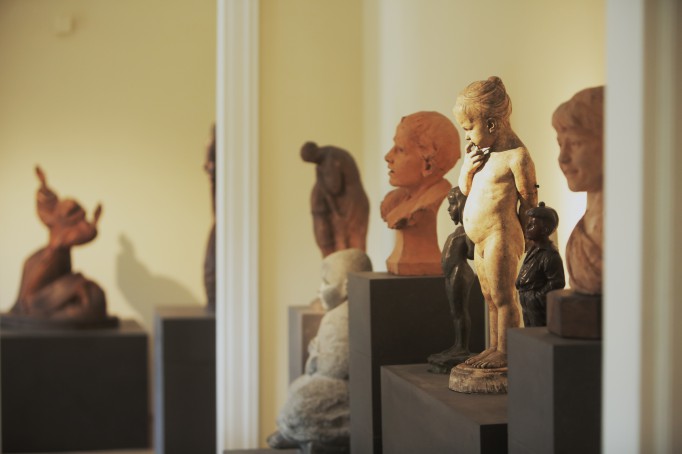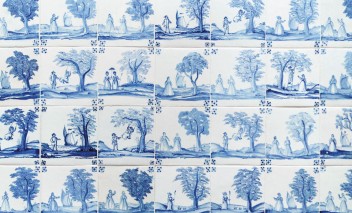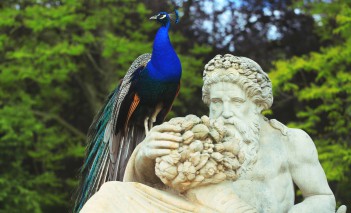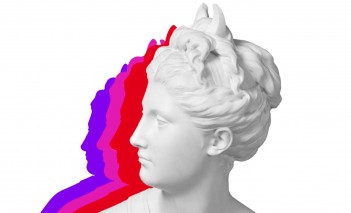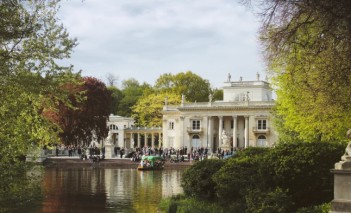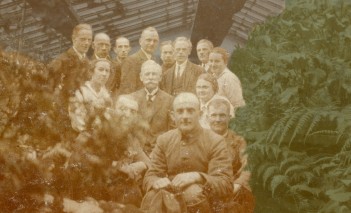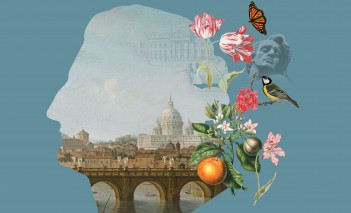Polish Sculpture Gallery. The greatest exhibition of this kind in Poland
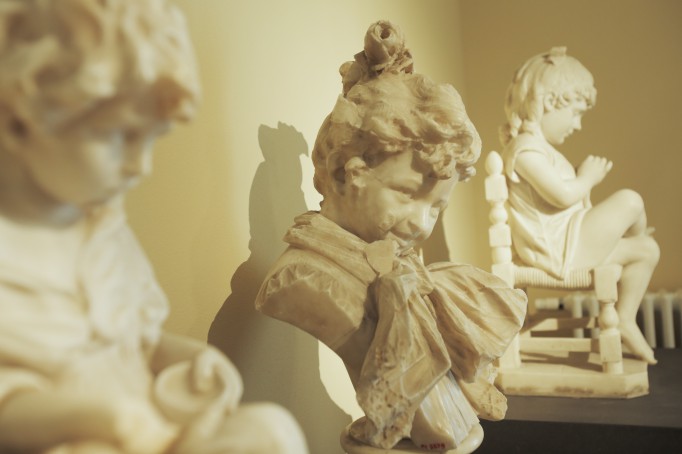
114 works of art, including sculptures of children and women as well as busts of famous historical personalities, will be displayed in the Polish Sculpture Gallery in the Old Orangery. These are works of almost the most prominent Polish artists active from the beginning of the 19th century until the middle of the 20th century.
The redecorated Polish Sculpture Gallery forms the largest permanent exposition of this kind in the country. It is situated in the west wing of the Old Orangery, in four enfiladed rooms on the ground floor and nine on the first floor; in the 18th century the rooms were occupied by the King’s court and service.
114 works of art from the beginning of the 19th century to until the first half of the 20th century are works of notable Polish artists complemented with German, Italian, French, and Russian sculptures. They represent the currents which were dominant in art at those times: Classicism, Impressionism, Art Nouveau, Symbolism, and Neoclassicism. Works alluding to Fauvism can also be found there.
The first sculpture in the exposition is the Attacking Warrior – Aegineta, a plaster cast of a sculpture from the western part of the Temple of Aphaea on the Aegina island (Greece), built in c. 500–490 BC. Next, copies of famous Antique sculptures are presented: the bust of Apollo Belvedere and Diana from the Palace of Versailles.
Those are followed by sculptures of rulers, writers, painters, actors, clerics, and social activists. It is the most numerous group of works of art in the Polish Sculpture Gallery, displayed on the ground floor and the first two rooms on the first floor. It contains works of the most eminent Polish Classicists: Jakub Tatarkiewicz and Paweł Maliński. The displayed sculpture by the former is the marble Bust of Napoleon, and of the latter – Bust of Bishop John Baptist Albertrandi.
The theme of sculpted portraits is complemented by works of Xawery Dunikowski – Portrait of Henryk Szczygliński (1881–1944), Julia Keilowa – Norwid, Konstanty Laszczka – Bust of Zofia Lubodziecka (1875–1931), and Wacław Szymanowski – Mickiewicz After the Improvisation, as well as some sculptures from "Pochód na Wawel" (Procession to Wawel) – a project composed of 52 figures, which was not completed in its planned location – the hills of Wawel.
The first sculpture of the eastern part of the exposition on the first floor is the beautiful Head of an Egyptian Woman by Jan Antoni Biernacki. It is a highly stylized Formist sculpture made of rotund geometric shapes, and with schematic facial features. For Formists, expression was more important than faithfully mapping reality. The Head of an Egyptian Woman is also a perfect example of artists being inspired by the past, like in this case – the art of Ancient Egypt.
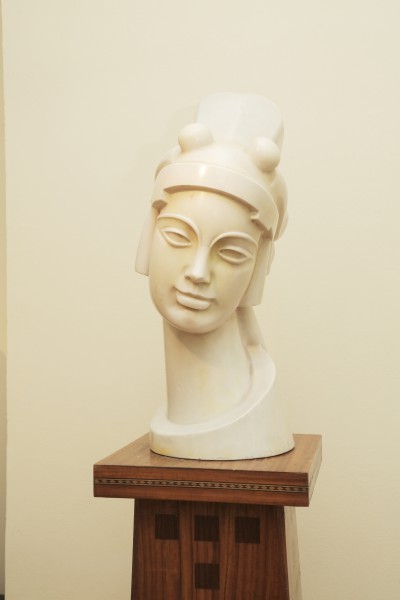
The next room features sculptures of children and those relating to motherhood. They are works of art of Polish artists such as: Antoni Madeyski, Konstanty Laszczka, Jan Szczepkowski, Wacław Szymanowski and Luna Drexlerówna, as well as Italian artists: Cesare Lapini and Antonio Manetti.
In the next part of the exhibition, religious sculptures are featured; they include: Saint Francis by Romuald Zerych, the Kneeling Angel by Maryla Szczyt-Lednicka or the Three Marys by Henryk Kuna.
The next sculptures show figures of women. They include the Aurore by Henryk Kuna as well as heads of women sculpted by him, or female nudes, whose sculptors include Hanna Nałkowska-Bickowa, Jan Szczepkowski, Edward Wittig, August Zamoyski, and Jan Antoni Biernacki. This part of the exposition is complemented by female portraits, one of them showing Maneta Radwan, the wife of August Zamoyski.
